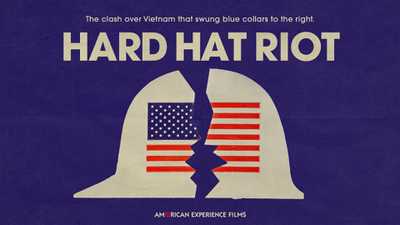
Swamp smarts, birds, tourist attractions, hurricanes, stories of survival.
When Betty was five, she’d go south into the swamp to play. Spend all day there barefoot, running around. Some people have street smarts. Betty and her friends had swamp smarts.
Back then, boys started hunting before they turned ten. Betty’s husband used to go out with his cousins for days at a time. They’d take a spoon, a pan, a knife and a little bit of bear grease — that was all. They didn’t take food because they were supposed to find it. Their grandfathers had used bow and arrows; they used knives and .22s. They cooked whatever they caught over the fire and slept on the ground under the stars.
They called it a swamp, but really it was a slow-flowing river, dotted with tree islands. Betty grew up in a chickee with four walls near the Tamiami Trail. But Betty’s mom grew up in the open air, on one of the tree islands. Her chickee had no walls. To sleep, they put bedding on a raised platform. Alligators, snakes, and other critters moved around at nighttime, so it was safer to sleep off the ground. Still, you got in the habit of lifting things up and shaking them out. A snake could crawl up and get under the bedding. An alligator might be under the table when you woke up. It was almost like having a pet dog — albeit one that you weren’t going to pet or teach tricks or call Fido.
Betty’s mom was born around 1932, four years after the trail was cut through the swamp, connecting Miami and Tampa. For years, the government had been building canals to drain the land for agriculture. Between the road and the canals, the water flow changed. Animals couldn’t travel their usual routes, and neither could the people who ate them. They started moving off the tree islands, closer to the trail. They started searching for ways to make money.
Betty’s mom moved all over the state looking for work. She picked citrus in the groves west of Lake Okeechobee. She picked tomato and watermelon in the fields where the Big Cypress Preserve is today. She worked alongside people from Mexico, which is how she learned Spanish. She learned how to drive a tractor because you got paid more that way.
Sometimes, she’d take her family to live at one of the tourist attractions, where Indians made money for being Indians. They’d sit and sew patchwork or weave baskets while tourists watched. Betty’s two older brothers were born at the tourist attraction in Silver Springs, which was also where they filmed a bunch of Tarzan movies in the 1930s and ‘40s. Betty’s mother made extra money doing Jane’s hair.
Soon after Betty was born, the family moved to the Indian village along the Tamiami Trail. Life became more permanent. In the village, you were surrounded by your aunts and uncles and cousins. Sometimes Betty’s grandma lived with them, too.

Betty’s grandma was old-school. She lived in a chickee with no walls. She cooked over an open fire and sewed her own clothes. She made dolls to sell. Now and then, they took her to town to buy fabric and beads. Back then, the tallest building was the courthouse by Miami Beach. Betty’s grandma didn’t own shoes, but some of stores had signs that said you had to wear them. So her family bought her little slippers to wear.
When she wasn’t living with them, Betty’s grandma lived with other relatives at the tourist attraction on the Dania Reservation. Tourists came to see her sew. When Betty visited, her grandmother told her to run and play, but not to bother the tourists or get them upset. When Betty was tired, she fell asleep and the tourists watched her sleeping.
Betty’s grandma was a quiet woman, comfortable in solitude. So was Betty’s mom, and Betty is the same. But as a little girl, she asked a lot of questions. She wanted to know what the world was like back then. She wanted to know how they carried water (baskets sealed with sap) and what they used to make cups (clay baked in the sun). Her mother and her grandmother did their best to answer.
Betty’s favorite stories were stories of survival. Her mother told her about how they prepared for a hurricane, chopping the legs of the chickee, which made the roof fall to the ground. When the storm was near, they climbed under and held onto the supports. Then, when it was all over, the men went out and cut more legs and propped the chickee back up again.
That was how they did it when they had time. If they didn’t, her grandfather simply tied the kids to the legs of the chickee. He told them whatever they did, just hold on.
There are much sadder stories of survival too, stories Betty doesn’t particularly like to talk about, ones she wishes she didn’t have to tell her kids. They’ll be driving on the turnpike and she or her husband will say, here it is, this is where it happened, this is where our people were chased by the cavalry. They came into the swamp because they knew the land, and horses couldn’t travel in the muck. There wasn’t a lot of tree cover, so they had to go under water. This is where men, women and children, young and old, submerged.
In water, sound travels. They could hear the horses. They were close enough that some of the people could look up through the water and see the soldiers. But the soldiers couldn’t see them. It felt like an eternity. Finally, the cavalry turned and went. But not everybody came up out of the water. Many of the little ones had drowned.
These were the kinds of hard choices people had to make. Risk being heard and have everyone killed, or go under water knowing not everyone would come up. Leave your land, or die fighting for it. They went under. They fought.
Later, the battle became one of words instead of bullets. But words were dangerous, too. In English, people didn’t say what they mean. Many of the elders didn’t read or write. They would talk to the government and make a periodic agreement. When the government gave them a new agreement, they would put it side by side with the old one and use a ruler to count every word. If the newer document had less or more words, or if the letters didn’t look the same, they would know that something had been changed.
That’s when some people decided to send their children to school, to learn the other society’s education, so they could come back and read and interpret and help their people. Betty’s mom sent her. But when she came home, she was to leave school and that language at the door.
Betty did as she was told. She has lived in the same Indian village from the time she was six. After school, she went to work for the tribe. She has worked as a tour guide and also in the judicial system and at the tribal clinic.

For the past eight years, she has run an airboat tours company along the Tamiami Trail. She has visitors come from all over the world. She has met people from other countries who have heard that Indians are extinct. She has had other people ask about what she is going to do when the swamp is no longer there. But that is not in her plans. She plans to to keep it there.
So much has been lost already. You can’t live off the land anymore. The water is so polluted that to do so would be a slow suicide. The last family still living on a tree island moved out in the 1960s. They still use the islands to plant corn and pumpkin, but the crops aren’t growing like they did before. Sometimes the islands are underwater because the government floods them to manage water in the urban areas — which grow bigger and bigger all the time. And the birds are only a fraction of what Betty saw when she was a girl, which was only a fraction of what her mother had seen, which was only a fraction of what her grandmother had seen.
They are still a water people, but now they are in airboats instead of canoes. Canoe travel has been impossible for a long time. Today, because of over-logging, it’s hard to find a cypress tree big enough to make one even if you wanted to. One of Betty’s uncles who made canoes died five years ago. He was trying to make one full-size, but he didn’t finish in time. Betty worried that the art would be lost forever. But young people are taking it up. One kid told her — I don’t want it to die on my watch.
Maybe someday, Betty will get to sail along the coast in a canoe like her mother did when she was a little girl. Betty’s mother was especially close to her grandfather, and he took her everywhere. They were traveling one time in the canoe when the winds started to change. It happens in Florida. You can have a sunny day and a few minutes later the sky is dark. A storm was coming. He sailed up to one of the islands and dragged the canoe up onto the shore. He flipped it over and told Betty’s mom to get under. By that time, the rain was coming down and lightning filled the sky. High, gusty winds whipped through the sawgrass. But they just went over the round dome of the canoe. Underneath, Betty’s mom watched the water coming up. There were ants and other insects floating around. After a while, the wind quieted down and the rain stopped. Her grandfather pushed the canoe back over. They got in and kept going.













